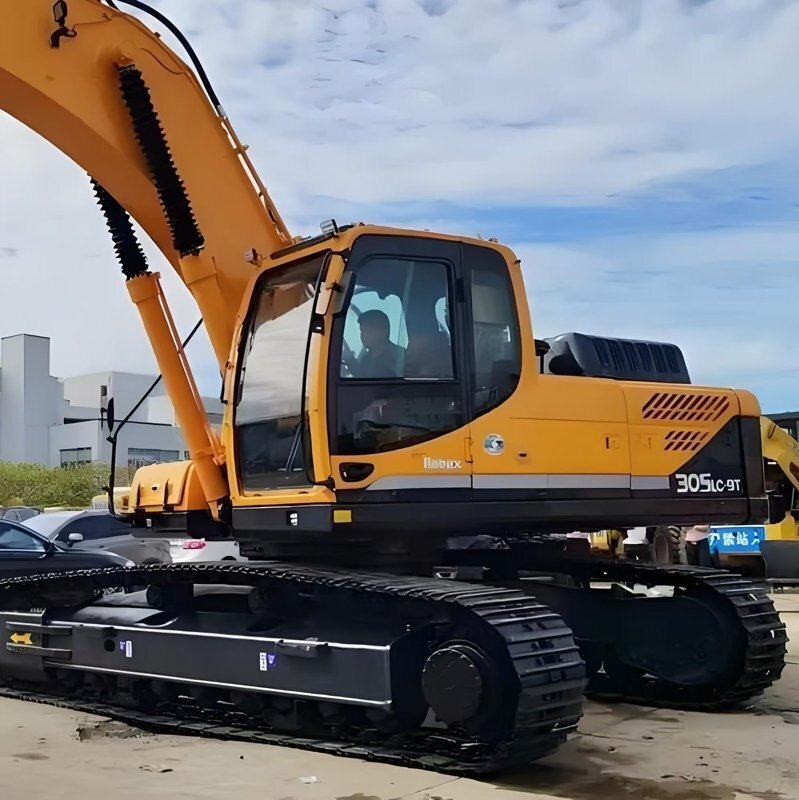How to reduce wear when excavator crawler is walking
The walking part of the excavator is composed of sprockets, supporting wheels, driving wheels and rail chain links. After running for a certain period of time, these parts will show a certain degree of wear. However, if you pay attention to daily maintenance and take a little time to do proper maintenance, you can avoid "major surgery on the excavator's legs" in the future. It saves you considerable maintenance funds and can also avoid delays in construction caused by maintenance.

How to reduce the wear of the excavator track when walking
The first point: If you walk on the inclined ground repeatedly for a long time and turn suddenly, the side of the rail chain link will contact the side of the driving wheel and the guide wheel, thereby increasing the degree of wear. Therefore, you should avoid walking on the inclined area and turning suddenly as much as possible. Straight travel and large turns can effectively prevent wear.
Second point: If the machine is used while some of the sprockets and track rollers cannot operate, it may cause the rollers to wear out and the rail chain links to wear out. If a roller that cannot operate is found, it must be repaired immediately! In this way, other faults can be avoided.
Third point: The mounting bolts of the track rollers, sprockets, track plate bolts, drive wheel mounting bolts, and walking pipe bolts are easily loosened due to vibration after the machine has been working for a long time. For example: If the machine is operated while the track plate bolts are loose, it may even cause a gap between the track plate and the bolts, which may lead to cracks in the track plate. Moreover, the gap may also increase the bolt hole between the track and the track chain link, resulting in the serious consequence that the track and track chain links cannot be tightened and must be replaced. Therefore, the bolts and nuts should be checked and tightened regularly to reduce unnecessary maintenance costs.
1. Characteristics of rubber track walking system
Rubber tracks have the characteristics of light weight, low vibration, low noise, high adhesion, good ground adaptability, and no damage to the road surface; they are especially suitable for urban construction.
The basic structure of rubber crawler and steel crawler is the same, usually composed of guide wheel, support wheel, drive wheel, support wheel, crawler and walking frame. The main differences and characteristics are:
(1) Rubber crawler is a continuous crawler made of rubber molded, with fabric and multiple steel wire ropes reinforced in the core, with spurs on the outside and transmission parts on the inside. The steel transmission parts are embedded in the vulcanized rubber belt. The main parameters of rubber crawler are pitch, number of sections, crawler width, pattern style, embedded metal parts style, etc.
(2) The drive wheel is installed on the travel reducer and is used to wind the crawler to ensure the mechanical operation. The drive wheel for rubber crawler adopts convex tooth shape with a pitch of 128mm. There is bending stress during the operation of the crawler, which will cause fatigue damage to the crawler, so the diameter of the drive wheel should not be too small.
(3) The supporting wheels, supporting wheels and guide wheels are respectively straddling the two sides of the track teeth and pressing on the rubber surface. To prevent the wheel rim from cutting and severely squeezing the rubber and causing damage, the wheel rim is wider: because the track teeth are higher, the wheel body is larger
2. Key points for use and maintenance
(1) There must be appropriate tension. If the tension is too small, the track is easy to fall off; if the tension is too large, the track life will be reduced. When checking and adjusting, the walking system should be lifted on one side, and its height should be 10-20mm, as shown in Figure 3. When the tension is small, it can be readjusted through the tension cylinder.
(2) During the machine's travel, sharp objects should be avoided to avoid scratching the track; too fast turns on concrete roads with high friction coefficients should be avoided to avoid rubber tearing. Under normal circumstances, too fast and too sharp turns should also be avoided. Try not to use one-sided track steering when turning.
(3) Do not let the track stick to corrosive substances such as oil. Once found, wipe them off immediately.
(4) When stored for a long time, it should be placed indoors to avoid sun and rain. Before storage, the track should be cleaned to extend its service life.
(5) Once the drive wheel is worn, it should be replaced in time.


